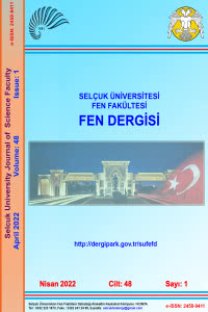MECHANICAL CHARACTERIZATION OF RECYCLED TIRES IN CONCRETE
Beton İçindeki Geri Dönüştürülmüş Araç Lastiklerinin Mekanik Özellikleri
___
- Eldin N.N., Senouci A.B., 1993, "Rubber-Tire Practices as Concrete Aggregate", Journal of Materials in Civil Engineering, Vol. 5 (4), pp. 478-496.
- Gesoğlu M., Güneyisi E., Khoshnaw G., İpek S., 2014, "Investigating Properties Of Pervious Concretes Containing Waste Tire Rubbers", Construction and Building Materials, Vol. 63, pp. 206-213.
- Huang B., Li G., Pang Su-Seng, Eggers J., 2004, "Investigation Into Waste Tire Rubber-Filled Concrete", Journal of Materials in Civil Engineering, Vol. 16 (3), pp. 187.
- Lee H.S., Lee H., Moon J. S., Jung H. W., 1998, "Development of Tire-Added Latex Concrete", ACI Materials Journal, Vol. 95 (4), pp. 356-364.
- Neocleous, K., Tlemat, H., Pilakoutas, K., 2004, "Design Considerations on The Use of Steel Fibres from Waste Tyres, as Reinforcement in Concrete", In: Proceedings of the First International Conference on Innovative Materials and Technologies for Construction and Restoration, Liguori Ed., Lecce, Italy, Vol. 1., pp. 611-619, 6-9 June 2004.
- Siddique R., Naik T.R., 2004, "Properties of Concrete Containing Scrap-Tire Rubber - An Overview", Waste Manage, Vol. 24, pp. 563-569.
- Shu X., Huang B., 2014, "Recycling of Waste Tire Rubber in Asphalt and Portland Cement Concrete: An Overview", Construction and Building Materials, Vol. 67, Part B, pp. 217-224.
- Tlemat H., Pilakoutas K., Neocleous K., "Demonstrating Steel Fibres From Waste Tyres as Reinforcement in Concrete: Material Characterization". In: Proceedings of the First International Conference on Innovative Materials and Technologies for Construction and Restoration, Vol. 1. Liguori Ed., Lecce, Italy, pp. 172-185, 6-9 June 2004.
- Tlemat H., Pilakoutas K., Neocleous K., 2006a, "Design Issues for Concrete Reinforced with Steel Fibres Recovered from Waste Tyres", Journal of Materials in Civil Engineering, ASCE, Vol. 18 (5), pp.677-685.
- Tlemat H., Pilakoutas K., Neocleous K., 2006b, "Stress Strain Characteristic of SFRC using Recycled Fibre", Materials and Structures, Vol. 39, pp. 365-377.
- Topcu I.B., 1995, "The Properties of Rubberized Concretes", Cement and Concrete Research, Vol. 25 (2), pp.304-310.
- ISSN: 2147-9364
- Yayın Aralığı: Yılda 2 Sayı
- Başlangıç: 2013
- Yayıncı: Selçuk Üniversitesi Mühendislik Fakültesi
MECHANICAL CHARACTERIZATION OF RECYCLED TIRES IN CONCRETE
METAL TABAKALI KOMPOZİTLERİN DÜŞÜK HIZLI ENİNE DARBEYE KARŞI DAVRANIŞLARININ İNCELENMESİ
SOLUTION TO A PIPELINE SCHEDULING PROBLEM BY USING A MIXED INTEGER LINEAR PROGRAMMING MODEL
MEHMET EMİN BAYSAL, Esra UÇAKTÜRK
PERÇİNLİ ÇELİK KÖPRÜ ELEMANLARININ YORULMA ÖMRÜ TESPİTİ ÇALIŞMALARI
barlas ozden caglayan, Hudai KAYA
POLAR REPRESENTATION OF COMPLEX OCTONIONS
ELEKTRO-EĞİRME YÖNTEMİYLE NANOFİBER TABAKALI HAVA FİLTRESİ ÜRETİMİ VE KARAKTERİZASYONU
KEVSER DİNCER, GÜROL ÖNAL, AHMET AKDEMİR, Mehmet SELBES
ELA ERTUNÇ, TAYFUN ÇAY, ÖMER MUTLUOĞLU
DRUG BIT CUTTING TRACE IMAGE COLOURS AND CUTTING FORCE FLUCTUATION RELATION
MEHMET KEMAL GÖKAY, ARİF EMRE DURSUN
ARK AKIMI VE ARK GERİLİMİNİN BAĞLANTI MUKAVEMETİ ÜZERİNE ETKİLERİNİN ARAŞTIRILMASI
AHMET AKIN, ALİ SERHAT ERSOYOĞLU
INVESTIGATION OF SPATIAL ACCURACY OF HIGH-RESOLUTION (50cm) WORLDVIEW-2
